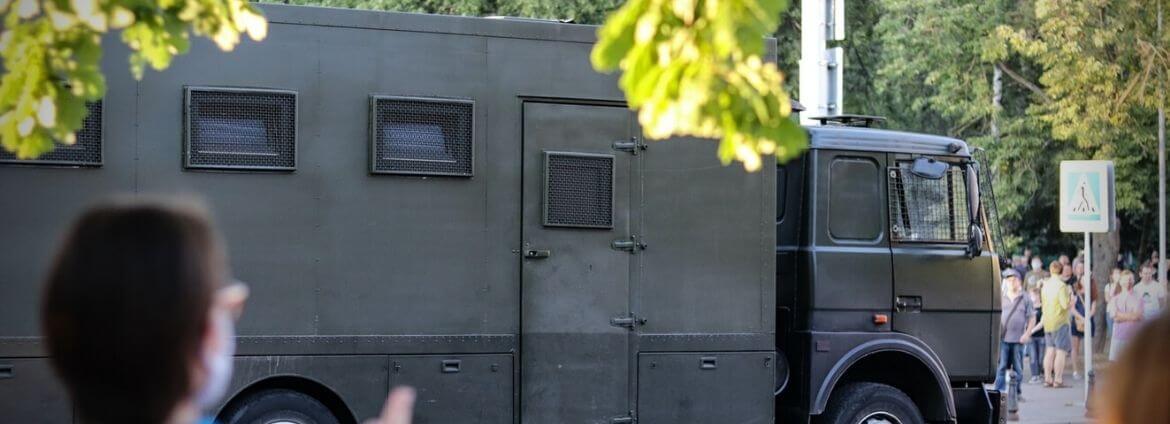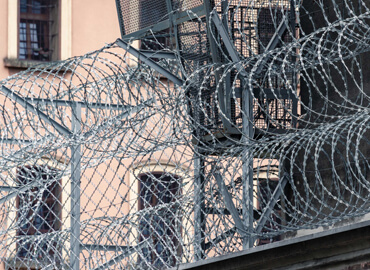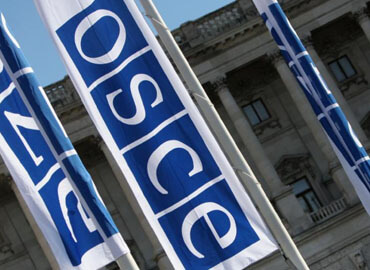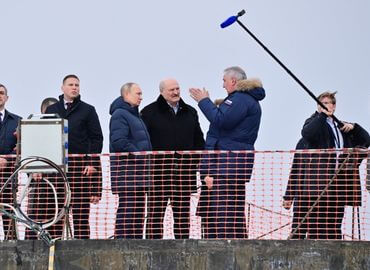The end of 2021 has seen a new configuration in Eastern Europe. It came about due to several major factors: changes in Russia’s domestic policy, Zelensky’s active diplomacy, a change in the U.S. administration, and a political crisis in Belarus.
It should be noted that Zelensky won the election on a mandate for a «policy of peace» to reduce the escalation of the conflict with Russia, which had been growing in the last year of President Poroshenko’s tenure.
From May to December 2019, in accordance with this mandate, Zelensky engaged in active negotiations with Moscow, emphasizing that his administration had A and B plans. Plan A worked towards intensifying negotiations relying on the «Steinmeier formula,» considering red lines that Kyiv was not ready to cross. The then head of the Ukrainian Foreign Ministry, Prystaiko, formulated these specifically, speaking on October 14, 2019, at the EU Foreign Affairs Council.
On December 9, 2019, a Normandy Format summit was held, at which Zelensky met with Putin. Until July 2020, active negotiations continued in various formats between Moscow and Kyiv. These led to an exchange of prisoners, the withdrawal of troops, the regulation of checkpoints, and gave a new impetus to the work of civilian organizations in the zone of separation.
Although Zelensky was sharply criticized by his rivals in the Ukrainian political scene, who accused him of betrayal due to his willingness to work according to the «Steinmeier formula», Zelensky continued to develop negotiation tracks until it became clear that the Kremlin did not want to take advantage of this favorable situation and make any concessions. The Kremlin insisted on the implementation of unacceptable clauses of the Minsk agreements.
After the agreement «on a full and comprehensive ceasefire» was signed on July 22, 2020, at a meeting of the Trilateral Contact Group in Minsk in the second half of 2020, Kyiv, with the support of France and Germany, continued to move towards the development of a «road map» for the settlement, which was planned for agreement with Moscow.
On February 8, 2021, Germany and France sent Moscow a draft of the Normandy Format recommendations for the Contact Group. Moscow rejected these recommendations. Dmitry Kozak, Vladimir Putin’s adviser on the Donbas settlement, said that «the presented draft is too much of a ‘compromise’ in the sense that its streamlined provisions will cause new insoluble contradictions in the Contact Group.»
On February 16, 2021, Moscow sent its amendments to the recommendations to all negotiators. At this point, the movement towards «road maps» ceased. In March, attention was focused on the redeployment of Russian military units on the border with Ukraine. In April 2021, Putin announced that he would not discuss the Donbass problem with Zelensky. At the same time, the meetings of representatives of Kyiv with representatives of ORDLO (CADLR), mediated by the OSCE, reached an impasse. From that moment on, the situation around the settlement began to deteriorate rapidly and ended with a publication by Dmitry Medvedev on October 11, 2021, stating that contacts with the current leadership of Ukraine are meaningless and that the Kremlin intends to wait for a change of leadership in Kyiv.
On November 17, the Russian Foreign Ministry published on its website correspondence between Sergey Lavrov and Heiko Maas and Jean-Yves Le Drian. This unusual step, violating the norms of diplomacy, was taken to demonstrate the absolute impossibility of further negotiations in the Normandy Format on the implementation of the Minsk agreements and to shift the responsibility for this onto Germany and France.
In other words, already by the end of 2020, Zelensky’s team had completely exhausted their Plan A that stemmed from the «peace mandate.» At this time Moscow found itself in the center of an international scandal surrounding the poisoning of Navalny. The political crisis caused by the presidential elections and the forming of a new alliance between Lukashenko and Putin then continued in Belarus. At the same time, Trump’s term was ending, and a fierce election campaign was underway in the U.S.
Given this, Kyiv shifted to plan «B,» which consisted of a sharp increase in diplomatic activity and an active information war against the Kremlin.
Kyiv led active negotiations on the rearmament of the Ukrainian army, on the supply of lethal weapons from the U.S., drones from Turkey, and modern air defense systems. Kyiv quickly brought the Crimean Platform project towards a practical result. Since April 2021, the office of President Zelensky began to make statements along the lines of the Minsk format having reached a dead end and that the U.S. should be involved in the Minsk talks. In 2021, a series of painful steps were taken by Kyiv, including the blocking of three pro-Russian television channels in February (112 Ukraine, ZIK, and Newsone), the NSDC’s decision on the register of banned sites in July, and Medvedchuk’s house arrest in October.
Zelensky and his staff’s international activity in 2021 looks like a transition to Plan B; that is, the creation of a new international coalition around the problem of Russian aggression against Ukraine to increase pressure on Moscow and to stay ahead of the media agenda.
This turn in the Ukrainian-Russian confrontation took place at the same moment when Alexander Lukashenko, instead of reducing the temperature of the political crisis in Belarus, decided to «globalize» it. On May 23, Minsk forced a civilian airplane with Roman Protasevich on board to land, in early August a wave of migrants began to break through the Belarusian-Lithuanian border, and then a larger crisis on the border with Poland ensued. These actions were accompanied by Lukashenko’s rhetoric not only against the West, but also against Ukraine. As a result, there were well-grounded fears in Kyiv that Belarus, under Lukashenko, would find itself in the position of a “Kremlin proxy,” with which the Kremlin could provoke a military conflict with Ukraine.
The main result of 2021 is militarization in the region. Russia is maintaining a military presence on the border with Ukraine that is attracting much attention. Ukraine is preparing to repel a military provocation or invasion. Poland, Lithuania, and Latvia used not only police, but also military units during the migrant crisis. For each of these countries, the question arose as to what to do if the crisis on the border becomes more acute. NATO leadership is changing its strategy for the region and the Kremlin is responding to this with tougher and more vicious rhetoric than before.
What is the outlook for this 2021 crisis that is affecting all Eastern European countries?
Several «what if» scenarios should be considered:
- The Normandy Format and further work on the Minsk Protocol are paralyzed and will not be restored in the foreseeable future.
- Militarization will become a significant factor on the borders of Belarus with the EU and Ukraine with Russia and Belarus. The militarization of the Black Sea will intensify.
- Russia and Belarus drop out of the so-called «alliance for democracy.» Although this initiative is currently in an early phase and its prospects remain unclear, the fact that the alliance draws a political line through Eastern Europe, with Russia and Belarus on one side and Ukraine and the countries of Central Europe on the other, is important. Svetlana Tikhanovskaya was invited to participate in the «Summit for Democracy» from Belarus. This is painful for both Minsk and Moscow.
- Various security measures along the borders of the «alliance of two dictators» will be strengthened, and this leads de facto to the development of an alliance of «border countries from sea to sea.» Lukashenko, remaining as the head of Belarus, will not be able, in contrast to the situation after the suppression of the protests of 2010, to return to a «multi-vector policy.» Until he leaves, Belarus will have to act in an anti-Western circuit together with the Kremlin.
- The new stage of the Kremlin’s conflict with the West involves further repressive measures in Russia against the media, civic activists, and cultural figures. The public atmosphere in Russia has been rapidly deteriorating since the Kremlin decided to jail Navalny and declare his movement extremist. Various repressive measures have been carried out throughout 2021, and they will not cease, at least until the 2024 presidential campaign.
- The militarization of the region inevitably involves the locking down of many community connections. The Russian and Belarusian special services are putting all possible contacts of organizations and citizens with European partners under their control, threatening cultural relationships and education ties.
«A new cold war?»
These factors lead to there being a relationship between the West and the «alliance of two dictatorships» that is increasingly being called a «new cold war.» However, this metaphor is still at odds with reality. The Cold War involved three sets of action from the West:
- a policy of military-political containment
- active measures towards cultural hegemony
- negotiation tracks on security and human rights issues
In 2014-2020, Western countries employed only one instrument used during the Cold War period – sanctions. Of course, sanctions played a big role. But the further they extend, the more the period of sanctions is perceived only as preliminary. Sanctions have made it possible to signal the unacceptability of specific actions by the Kremlin and certain areas of its policy. However, at the next stage of the conflict they will be much lower than the demand that arises in the new context.
It should be noted that the entire range of measures that the West can take before a direct armed conflict with the Kremlin is already well known and has been discussed by experts both in the West and in the East. The main question regarding these measures («hellish sanctions,» the shutdown of payment systems, the announcement of personal sanctions against Putin – that is, the transformation of Russia into a «rogue nation») is predicated on the fact that the measures cannot be simply punishment but should also contain a negotiation proposal. And in contrast to the times of the «cold war,» it is precisely here that it is lacking. Moreover, the further the conflict in Eastern Europe develops, the more acute the question of responsibility for its consequences will arise, including the responsibility of Western countries.
The pace of escalation in Eastern Europe is such that the responsibility for a strategic decision regarding the Kremlin falls on Biden’s term, Macron’s second term, and a new coalition in Germany.
The most discussed scenario is related to the Biden strategy. It is still an outline and, therefore, impossible to judge its effectiveness, however it follows a pattern of containment-dialogue. Elements of containment are already visible: active military support for Ukraine, the position on Nord Stream 2, participation in strengthening the eastern borders of the European Union, steps to further limit the toxic political presence of Kremlin «proxies» in European politics and preparing actively for «hellish sanctions.» As for the «dialogue,» it should be emphasized that the crisis erupted exactly in the period between Biden’s first meeting with Putin and the anticipated second, at which the results of the 6-month de-escalation should have been wrapped up. Obviously, there was no de-escalation. The content then of Biden’s second meeting with Putin is in question.
There are three scenarios for the further development of events:
The first is that «Ukraine is an outpost of the West.» Obviously, the most painful scenario for the Kremlin is further energetic military-political support of Ukraine from the West. From the Kremlin’s point of view, it bears the character of NATO’s rapid eastward movement, creates in the Kremlin an unbalanced impression of a massive threat to national security and drives the Kremlin towards strong political frustration. In this scenario, Belarus will be quickly and totally drawn into the orbit of military cooperation with Moscow. «Ukraine is an outpost» also presupposes a concurrent strengthening of sanctions. In such a scenario, Ukraine must have reliable guarantees that its position as an «outpost» will pay off by obtaining statuses in the European Union and NATO that it is counting on. This scenario would set off a tough economic and information war between Moscow and Minsk against Ukraine, military blackmail, and provocations. There is no doubt that Putin will suffer political defeat if the West begins a real rapid movement towards Ukraine’s admission to the EU and NATO. Since such a defeat will be accompanied by the obliteration of civil society in Russia and Belarus, the West should, in this scenario, prepare for the deployment of a larger infrastructure to support pro-democratic forces in both countries, considering an increase in emigration from both countries.
The second scenario – a «change» – presupposes steps by the West towards de-escalation in the region. In this scenario, one could expect a) the rapid creation of a new negotiating structure to replace the Normandy Format; b) an agreement between the State Department and the Kremlin on revoking sanctions against Nord Stream 2 in exchange for a real reduction in Moscow’s current toxic activity; and c) a proposal from France or Germany to begin the process of negotiating a new collective security treaty in Europe in exchange for Putin’s departure from the Donbass region. There is little reason to expect this second scenario, but it should be kept in mind that the next stage of escalation will intensify discussion on this.
The third scenario, an embargo, focuses exclusively on economic mechanisms. It boils down to Russia’s deep economic isolation from the West. Currently, the U.S. and EU position has been declared quite clearly – the introduction of «hellish sanctions» in the event of an armed attack on Ukraine. It is also possible to introduce additional sanctions in the event of new flagrant episodes of human rights violations or proven toxic actions against democratic countries. During the preparation of the Summit for Democracy, the possibility of preparing a global Magnitsky Act was mentioned. Sanctions against the Kremlin for supporting Lukashenko’s repressive actions are under discussion.
Sanctions will undoubtedly lead to Russia’s further isolation. This is currently the inevitable minimum scenario. However, the consequences of this «isolation» are not obvious. Unlike in the 1970s-80s, today the Kremlin will increase its ability to bypass economic sanctions at the expense of third countries, and the list of these countries is quite large, aided by modern capabilities of industrial espionage. Of course, sanctions will not lead to a change in the Kremlin’s course, but they have an overwhelmingly positive effect in that they bring global focus to the Kremlin’s toxic actions, create a framework for cooperation with Moscow for small countries, and make it possible to pinpoint the circle of persons in the Russian leadership responsible for these toxic activities. However, it must be emphasized that all three scenarios – military escalation, exchange, and «hellish sanctions/embargo» – is only the first part of the task.
The second part is how to formulate a proposal to the Kremlin that this composition of the Russian leadership – or the next one – would see advantages for itself in entering a strategic dialogue, rather than plunge further into escalation and isolation. Today, the West is postponing a decision on what proposal to make to the Kremlin at the end of the 2014-2020 period. At the same time, such a proposal cannot be made based on geopolitical exchange; that is, at the expense of ignoring the free choice of the peoples of Eastern Europe – Ukraine, Belarus, and Moldova – in their intention to integrate into the European Union and NATO. It is hard to imagine that the alliance of Western countries could indefinitely put pressure on a country that is a member of the UN Security Council and a nuclear power without a vision of what the strategic dialogue should be and its desired results. Such a dialogue cannot be guided by capitulation or based on the expectation of economic collapse.
And if Russian society is forced to wait for Putin’s death to initiate changes, then it does not matter for the West, since the strategic dialogue with Russia will be built on approximately the same formats both under Putin and after him, given that Russia’s place in global politics will be determined by the fact that it remains outside NATO.
Alexander Morozov is an iSANS analyst, political scientist, philosopher, and lecturer at Charles University, Prague.
The article was prepared by iSANS specially for Reform.by.
Материал доступен на русском языке: Эскалация 2021 года. Последствия. Сценарии











